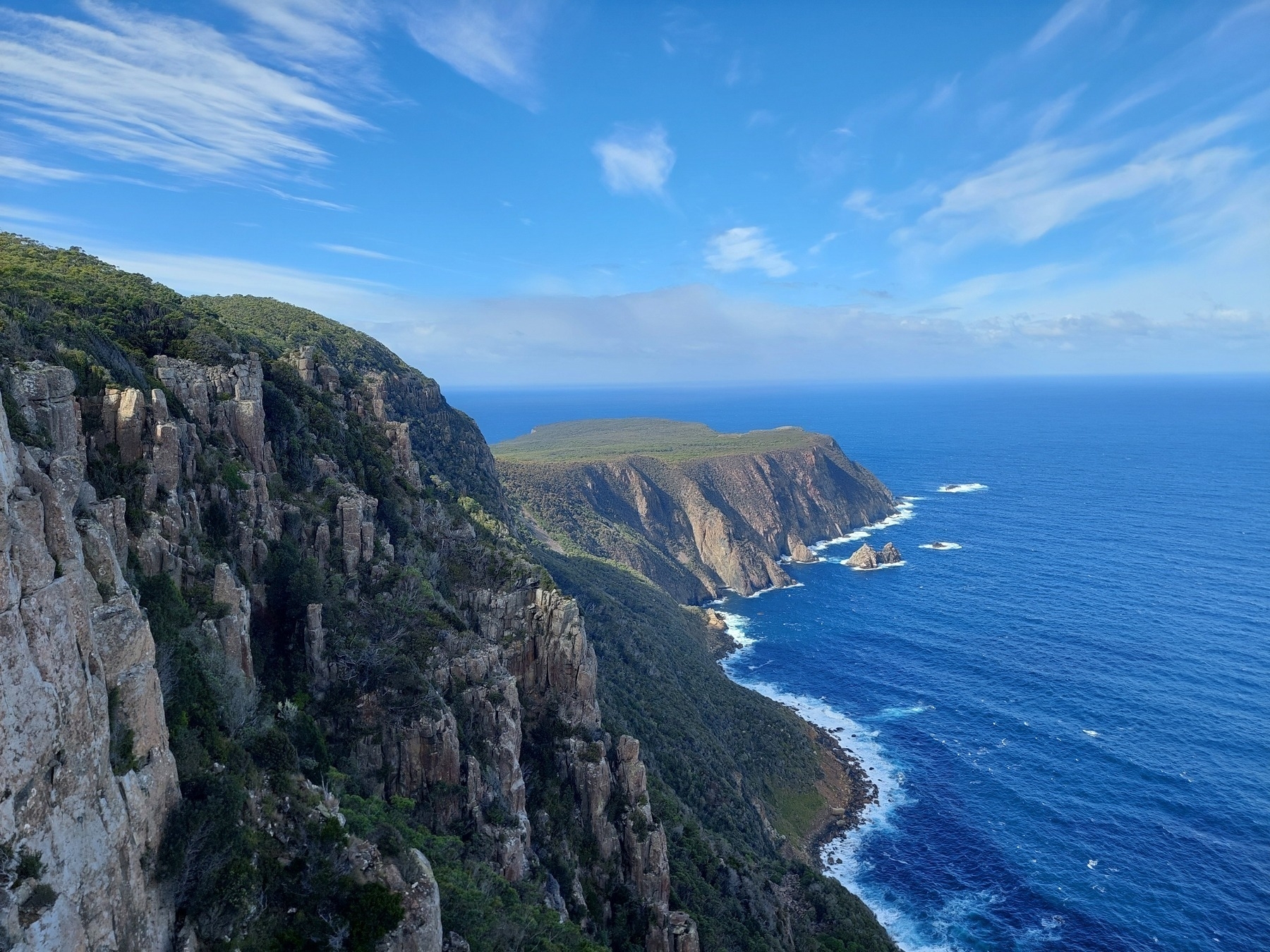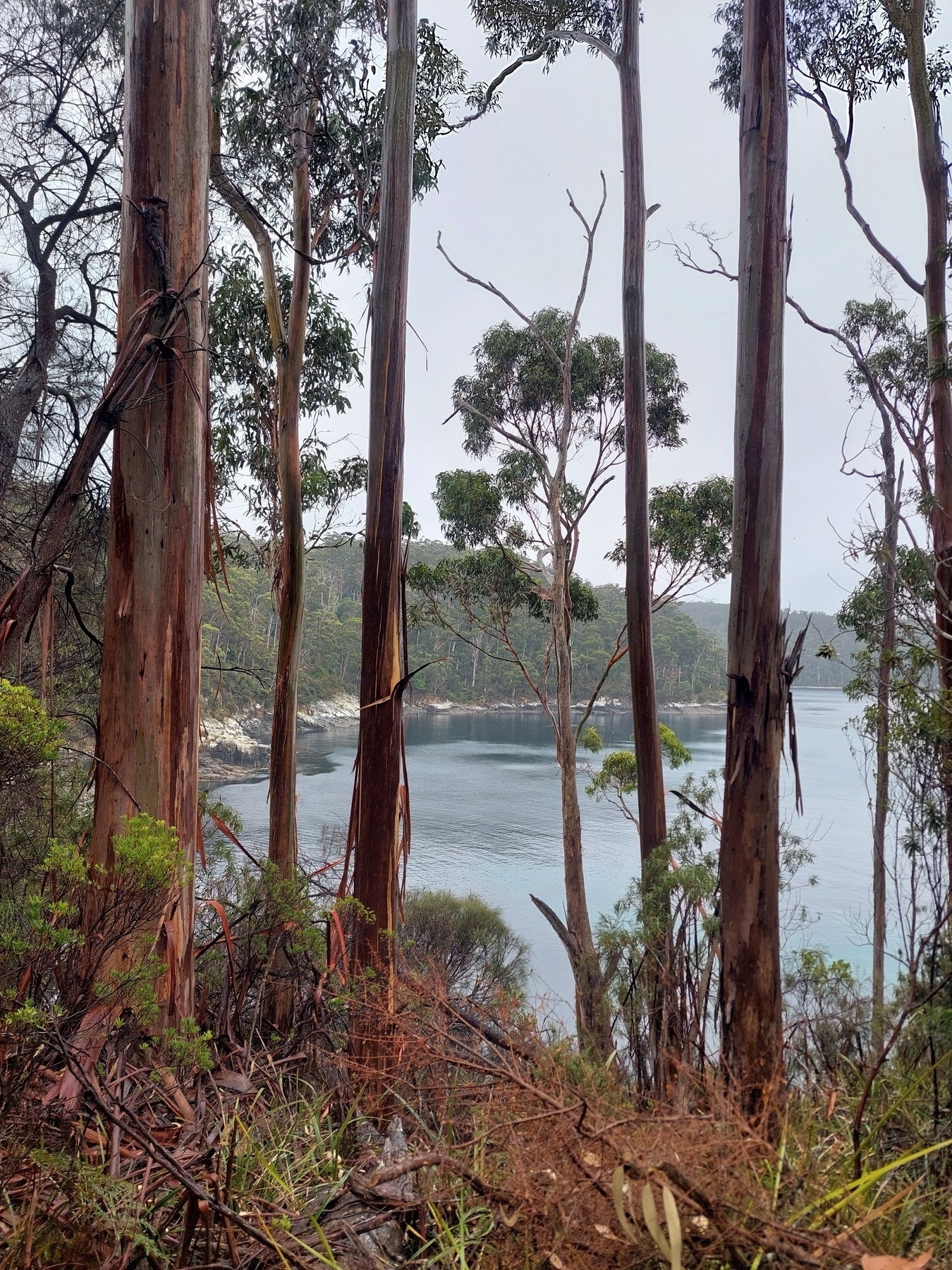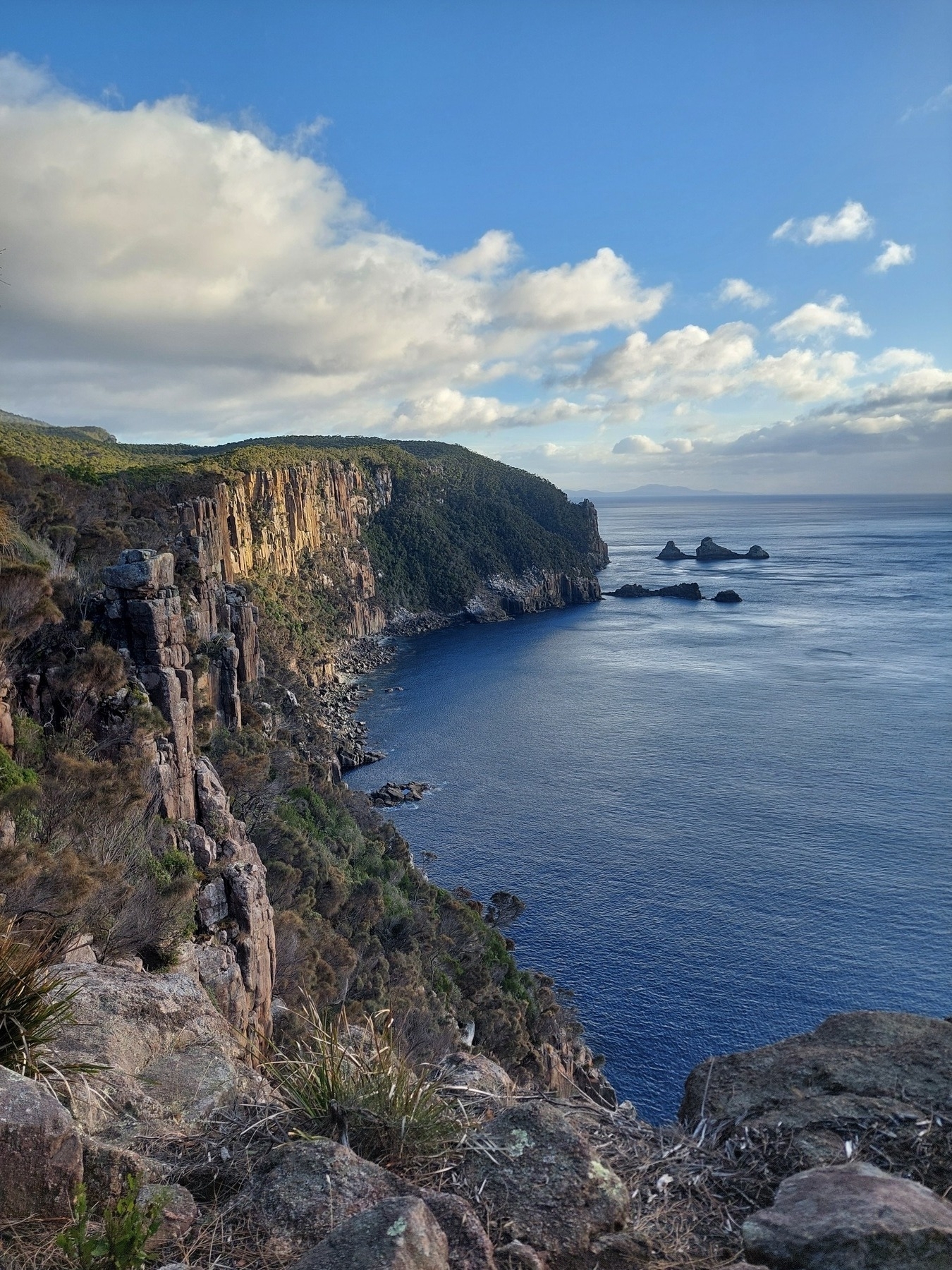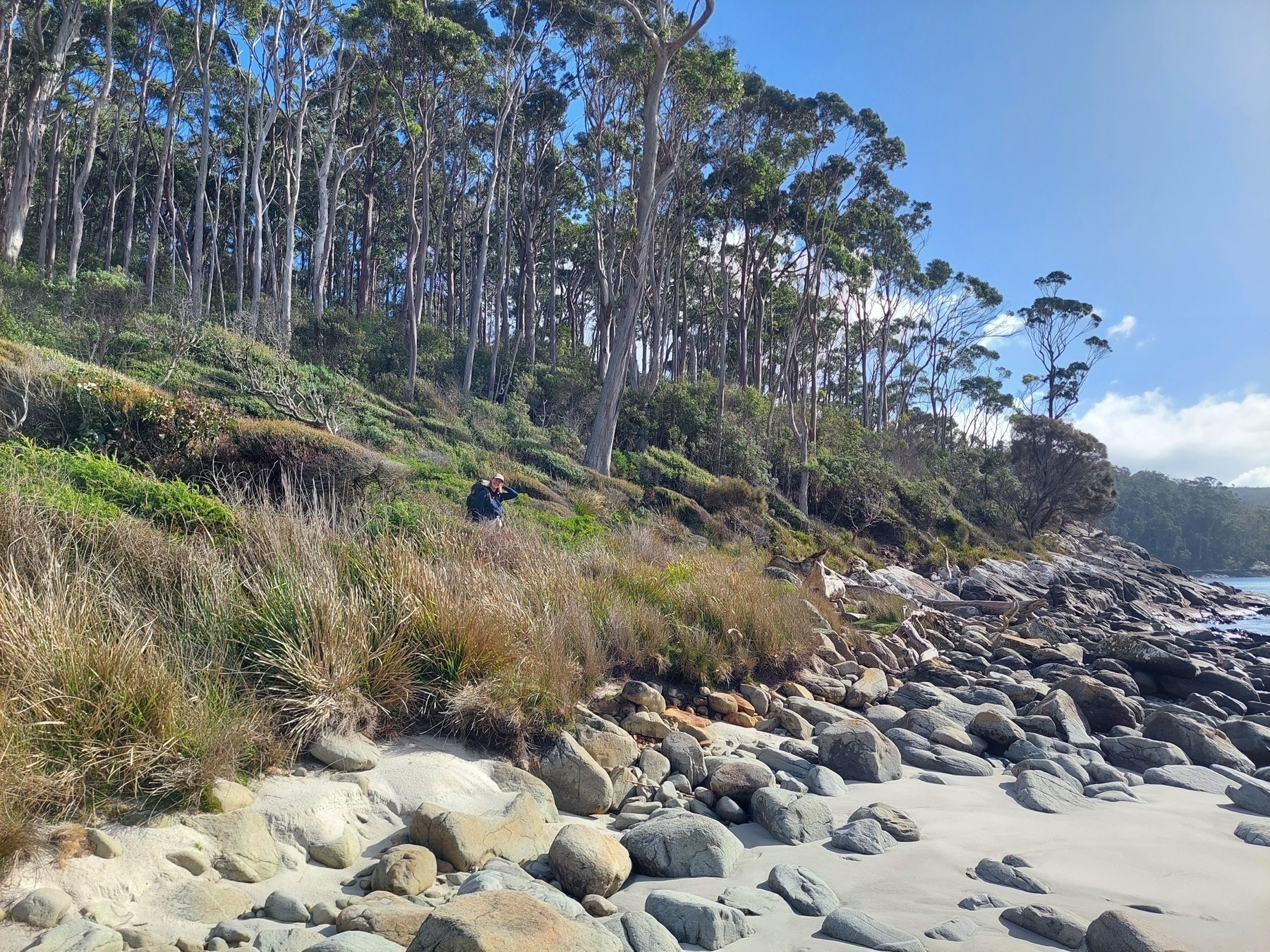The Tasman Peninsula
When planning this trip I was very attracted to the Tasman and Freycinet peninsulas in the southeast. I thought these areas jutting from the island would be wild wind and sea-battered places. I thought they might resemble some of what I had seen around the Gothenburg archipelago during my trip to Sweden. For me, the Gothenburg archipelago conjures up the worlds of C. S. Lewis' The Voyage of the Dawn Treader or Ursula K. Le Guin’s Earthsea Quartet. Magical, mysterious and wild places of imagination were suddenly brought to life for me here. So the thought of returning to a place like this was exciting.
But Tasmania’s southeast coast is remarkable in its own right. The coastline with its towering cliffs, pockmarked with small caves and interesting geological features was totally unlike Gothenburg or anything I have seen before, but it did not disappoint. I was awed by the huge cliffs that form Cape Huay and Cape Raoul and the many fantastic rock formations precisely crafted by millions of years of geological and environmental activity. The forests of the mountains and the low scrub towards each cape are unlike anything I have seen on Australia’s mainland. On the capes, the coastal scrub is beautifully highlighted by rusty red and brown foliage. Absolutely stunning banksias lined the trails and much inspiration for future gardens was found.
The trails to Cape Huay and Cape Raoul are busy. Even in April, there were hundreds of people on each trail. Although the locations themselves are spectacular, I could never totally succumb to the wonder and beauty. At the point of each cape, it felt similar to visiting an art gallery as I had to take my turn to peer from the lookout before shuffling along for the next person. It’s obvious why they are popular, they are stunning, unique, accessible (lots of steps, hardened paths, boardwalks and railings) and only a few hour’s drive from Hobart. But with so many other hikers and tourists always within earshot if not in direct sight, I feel like the full emotional impact that these wonderful places offer wasn’t available to me.
On the Tasman Peninsula, we camped at Fortescue Bay. It wasn’t our favourite spot. The beach and bay are spectacular and as it sits right on the trailhead for Cape Huay it made tremendous sense as a base camp. But the site is mostly used by caravanners (not my favourite neighbours when camping) and a boat ramp brings a steady stream of traffic through this site. So on our final days on the Tasman Peninsula, we moved to Biviouac Bay, a walk-in-only campsite just a few hours away. After three nights hemmed in by vans, we relished the space and isolation. It’s a small bay reached by hiking around a few other small bays and over small headlands. Once we set up our tent and after taking lunch we continued further along the trail, to the east-facing cliffs facing towards the open ocean. Here the trail was just ours. We saw no one and heard nothing but the wind, the sea and the birds. And although the cliffs here aren’t as famous as the Three Capes, this short expedition means more to me than the main walks. We returned to these cliffs before dawn the next day, bringing our stove for coffee and porridge to welcome the sun. Although delayed by a thick cloud on the horizon, it was still a special sunrise, the first we had watched together in a long time. Greeting the day’s first light, and then returning to our campsite, kicked off our travel day to Freycinet.





